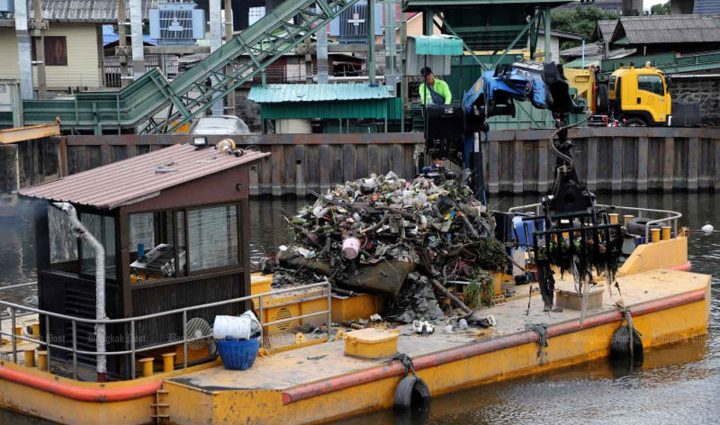
The Bangkok Metropolitan Administration (BMA) reportedly collects 9,000 tonnes of trash a day from canals and is urging people not to throw waste, including mattresses, into waterways or they will be fined, according to governor Chadchart Sittipunt.
Most of the waste has been spotted around Phra Khanong pumping station as 5-6 tonnes of trash are now being collected there per day.
Mr Chadchart said City Hall will beef up its inspections as waste sometimes gets stuck in water pumps and damages them.
The governor urged each community to act as the “eyes and ears” for authorities to help stop people dumping waste into canals.
Recently, the BMA issued a warning on its Facebook account against dumping large amounts of trash into waterways and other unsanctioned spots.
Violators can be fined between 2,000 to 10,000 baht for dumping into waterways, it said. The BMA urged people to check its Facebook page to see the schedule and spots arranged for dumping larger trash in each district until tomorrow, from 9am until noon, when authorities will take care of it free of charge.
Meanwhile, deputy Bangkok governor Tavida Kamolvej unveiled details of an ongoing one-map project during a seminar titled “State and Crisis” held at Thammasat University’s Tha Prachan campus.
Ms Tavida said the project will serve as resource data, meaning all affiliated agencies will be able to rely on a simple map. It falls on the shoulders of the BMA’s City Planning and Urban Development Department and will provide crucial information about risk-prone areas including those vulnerable to floods, fires and chemical leaks.
Therefore, the agencies will be able to work together and learn all of the routes in the city to provide prompt responses to any such dangers, she said.
Key infrastructure data will be regularly updated by district chiefs while cleaning staff will check areas that receive complaints via the Traffy Fondue app. Volunteers will also assist.
The BMA is first doing a trial run to help lay the foundations. The project is to be put in place by year’s end, Ms Tavida said. She said the BMA will input information on the QR code, which people can scan using their smartphone to learn more details about public property, such as maintenance data relating to fire extinguishers in local communities.

